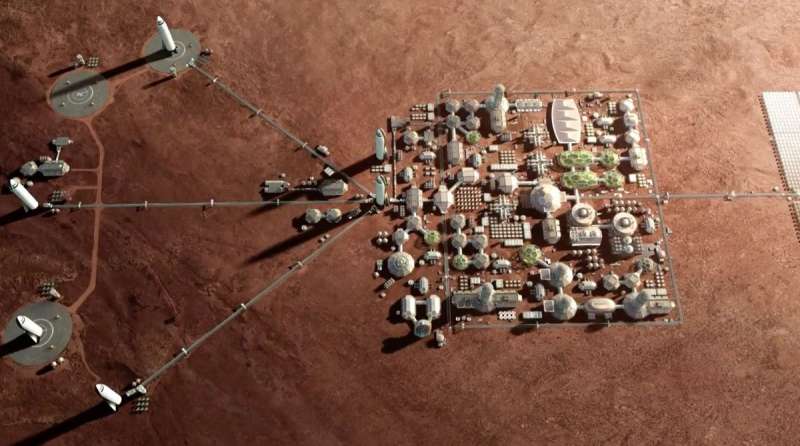One particular location in the solar system does have an abundant potential source of hydrogen and a relatively weak gravity well—Mars. Admittedly the hydrogen on the red planet is in water form. However, hydrolysis is a fairly common reaction that requires power and has the added benefit of producing pure oxygen, which is valuable in its own right.
Water has plenty of other uses on Mars, though, not the least of which would be sustaining any colony that would be looking to perform hydrogen export in the first place. However, water recycling will likely be a common technique in the early days of any colony, so once enough water is collected, additional input would only need to match the losses of any water reclamation system.
While it might not seem like it at first glance, Mars has a lot of water. Satellites have detected more than 5 million km3 of ice on or near its surface. If even a tiny fragment of that is exploited for water consumption at a colony, it could indefinitely support tens of thousands of residents.
That leads to another question—what to do with the water left on the surface after meeting the colony's needs. It could be used in any future terraforming efforts, but it would likely be more valuable to the solar system's economy if turned directly into hydrogen.
Dr. Shubov suggests doing precisely that—but only after the surrounding economy has grown enough to warrant mass use of hydrogen in space. That includes not only orbital infrastructure, like the Gateway space station but also the Mars colony itself. In the paper he suggests starting a hydrogen extraction process when approximately 10,000 people are resident in a future Martian colony. He even goes so far as to estimate the total amount of steel and plastic necessary to build a large enough colony to support all those colonists.
Those aren't the only stipulations, though—having launch infrastructure on the planet itself is key to making the economic argument to ship hydrogen off-world. One potential infrastructure solution is a mass driver—a type of very long rail gun that could potentially launch packages of hydrogen straight from the Martian surface into orbit. While there are even plans to build such a system on Earth, the physics of Mars is much more amenable to the large-scale engineering needed to build mass drivers or other infrastructures that could significantly decrease orbital launch costs.
It's great to get the hydrogen into orbit around Mars, but where does it go from there? To Earth is the most likely answer, at least until other bases in the solar system start to require their own hydrogen. Getting a significant amount of gas to Earth will require not burning some of that fuel. However, various potential cyclical solutions have been discussed, the most famous—the Aldrin Cycler.
We're still very far from any need for such a hydrogen market, even on Earth, let alone in space. But that will never stop some dreamers from coming up with scenarios that could fundamentally alter the economics of the solar system.



